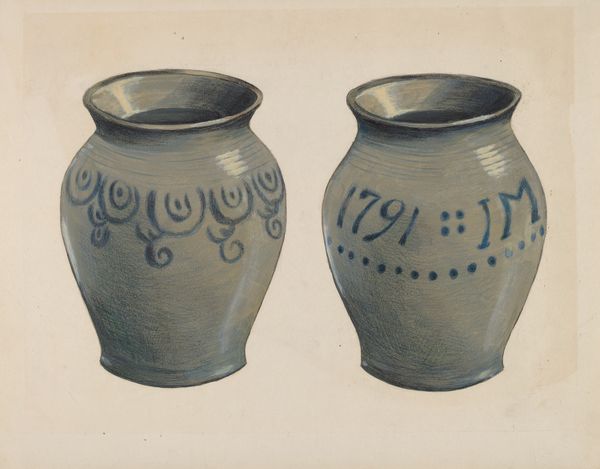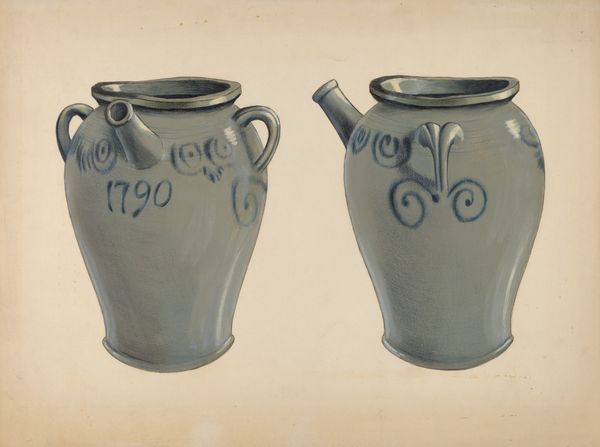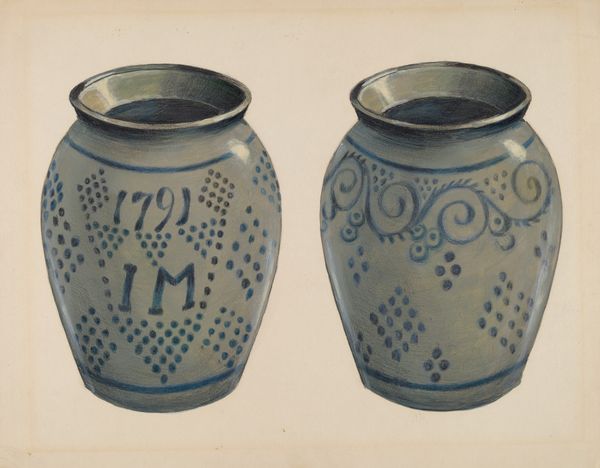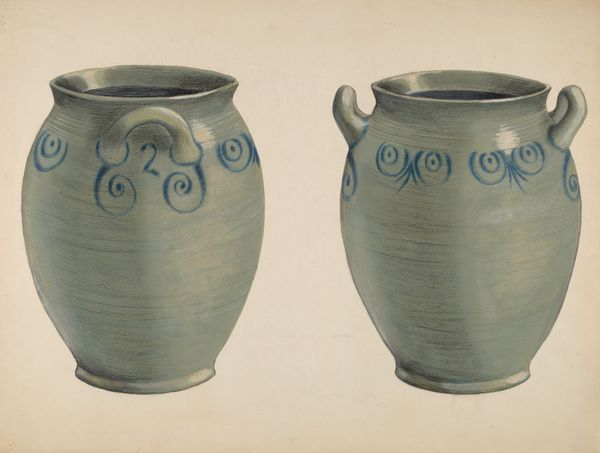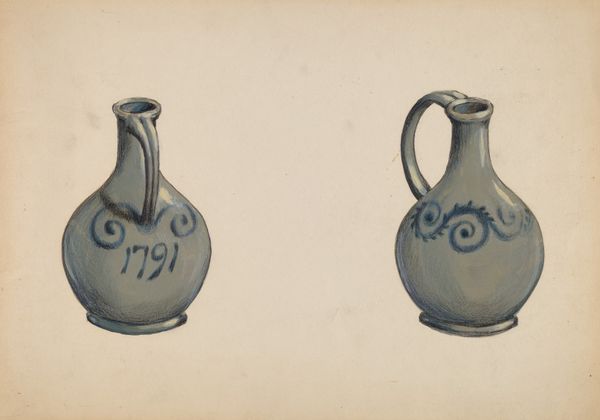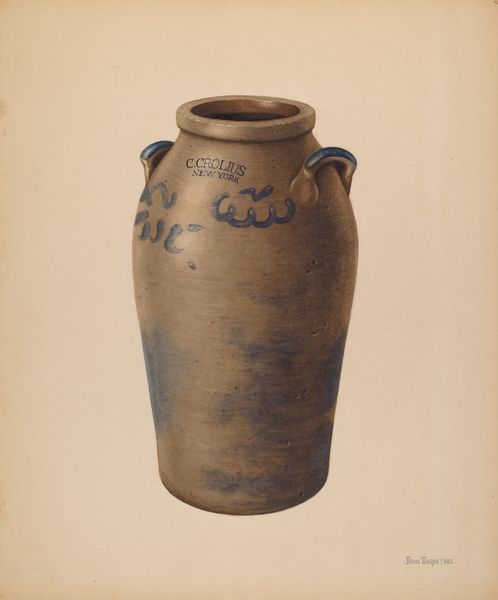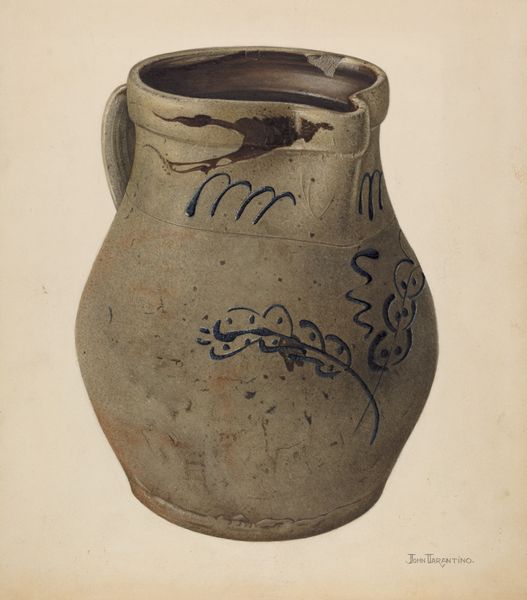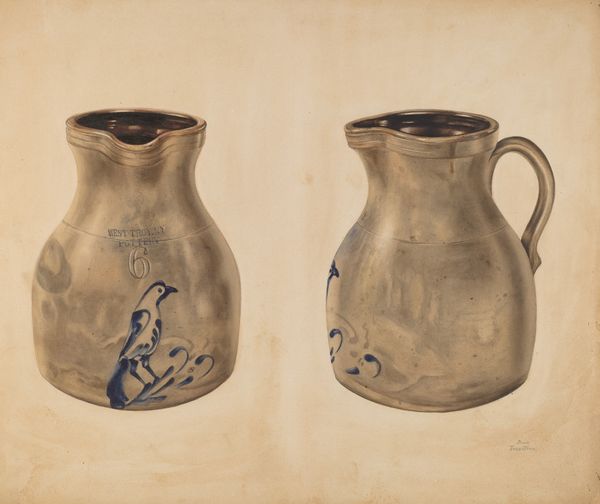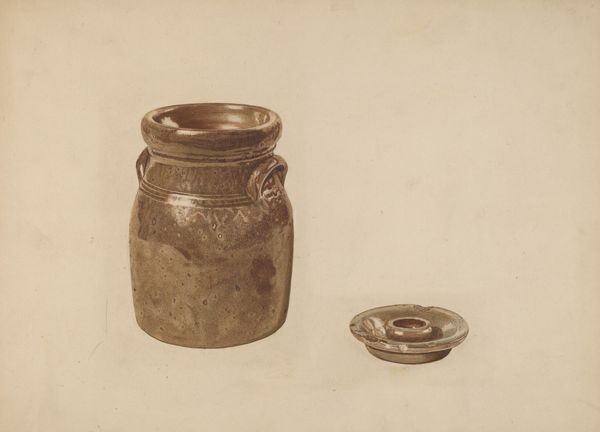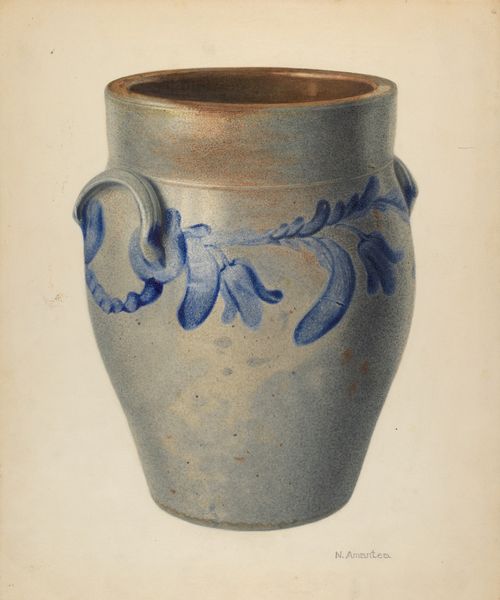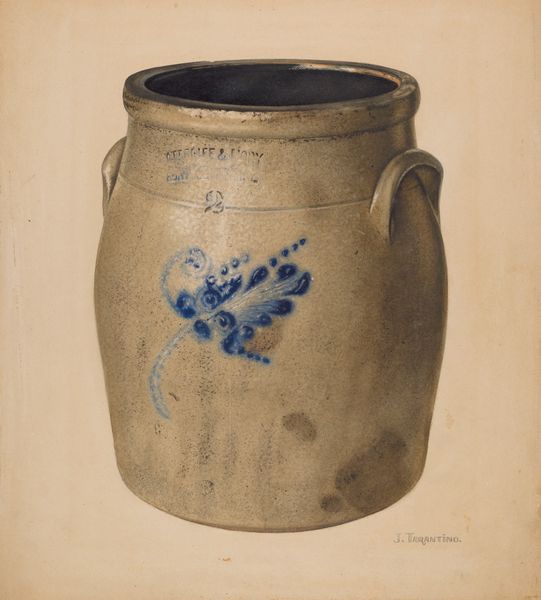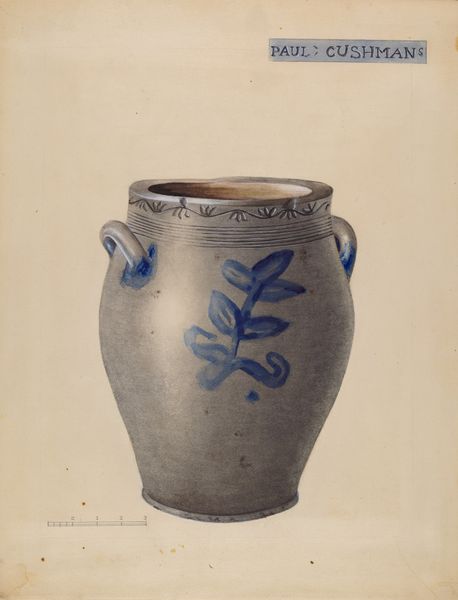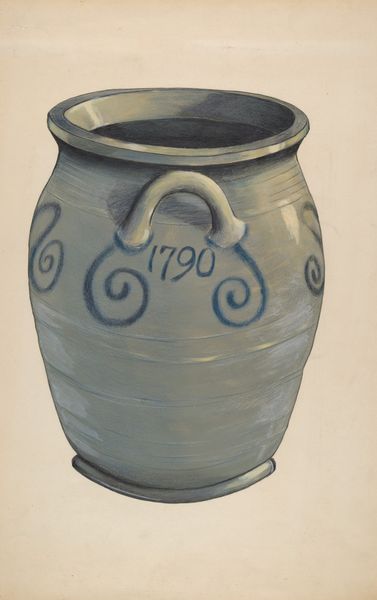
drawing, ceramic
#
drawing
#
pottery
#
ceramic
#
stoneware
#
ceramic
#
watercolor
Dimensions: overall: 27.9 x 35.4 cm (11 x 13 15/16 in.) Original IAD Object: 6 1/2" High
Copyright: National Gallery of Art: CC0 1.0
Curator: These complementary drawings showcase stoneware vases dating back to approximately 1936. Fred Weiss rendered these works using ceramic, drawing and watercolor techniques. They evoke a tangible sense of early American craft. Editor: My first impression is one of quiet domesticity. These pots, with their cool grey hues and simple shapes, project a sense of unassuming utility and charm. Curator: Note the forms themselves—the rounded bellies, the slightly flared rims. Weiss seems particularly interested in representing their material presence, the weight and volume these vessels command in space. The texture alone invites close looking and commands that our perception is keen on lines and how form meets shadow. Editor: Absolutely, but beyond just aesthetic appeal, I'm curious about the historical context. What kind of lives did these vases live? Stoneware was ubiquitous, the workhorse of 18th- and 19th-century households. Understanding that function elevates our analysis. Curator: An insightful perspective. Semiotics play a role. Consider the color choices: muted grays and blues suggest practicality, humility. It rejects notions of wealth, emphasizing necessity instead. Editor: Exactly. This utility intersects with ideas about gender and labor. Who were the potters? What social class did they represent? What objects, materials, foods did these containers serve to support or commodify? Curator: One vase sports linear inscriptions—initials, or maker's marks, perhaps alongside a production date, seemingly. And on the other, there’s almost folksy floral patterns reminiscent of traditional Pennsylvania Dutch craftsmanship. Editor: The contrasting ornamentation is significant. The text offers us insights on the value of authorship, craft and documentation while the more free-form designs imply themes on domestic creativity and artistry. Curator: On close reflection, Weiss prompts a richer interpretation based on material, form, and design that leads to questions on craftsmanship that transcend era. Editor: I'll agree that Fred Weiss’ attention urges an empathetic examination of ordinary objects; we consider their complicated roles in history and perhaps begin to re-think their relevance even today.
Comments
No comments
Be the first to comment and join the conversation on the ultimate creative platform.
